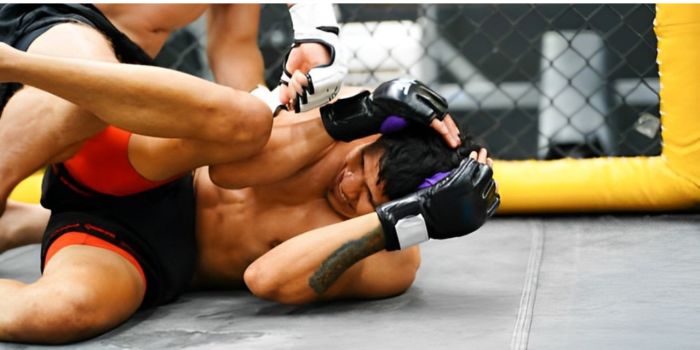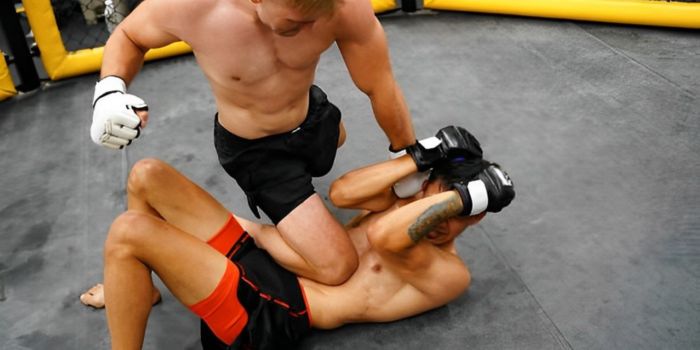In the dynamic world of Brazilian Jiu-Jitsu (BJJ), mastering control extends beyond physical techniques; it delves into the realm of mental fortitude. One common challenge practitioners face is flinching – a reflexive reaction that can hinder performance and impede progress. In this guide, we’ll explore how to stop flinching, unlocking a new level of mastery in BJJ.
Understanding Flinching
It refers to the involuntary reaction of withdrawing or tensing in response to perceived threats or stimuli. This reaction is often triggered by situations that evoke fear or discomfort, such as facing a formidable opponent or anticipating pain. shiver not only disrupts the flow of technique but also undermines confidence and composure, compromising overall performance.
The Psychological Aspect
At its core, Shiver stems from psychological factors deeply ingrained in human nature. Fear of injury, failure, or humiliation can trigger this reflexive response, manifesting as a physical barrier to effective execution in BJJ. Understanding these underlying fears is crucial in addressing and overcoming shiver reactions.
Techniques for Overcoming Flinching
Credit: The Grappling Academ
Breathing Techniques:
Controlled breathing serves as a powerful tool in managing tremble. Deep breathing exercises promote relaxation and focus, enabling practitioners to maintain composure amidst adversity.
Visualization and Mental Rehearsal:
By harnessing the power of mental imagery, practitioners can desensitize their reactions to triggering situations. Visualizing success and rehearsing appropriate responses fosters a proactive mindset.
Exposure Therapy:
Gradual exposure to discomfort and fear in a controlled environment allows practitioners to build resilience and tolerance over time. This systematic approach empowers individuals to confront their fears and overcome nervousness.
Focus on Technique and Strategy
Prioritizing technique over strength emphasizes efficiency and precision in execution. Developing a strategic mindset enables practitioners to remain calm and calculated under pressure, mitigating nervousness tendencies.

Building Confidence and Trust
Progressive Training:
Incremental training methodologies facilitate skill development and confidence building. Starting with manageable challenges and gradually increasing intensity instills a sense of accomplishment and self-assurance.
Positive Reinforcement:
Encouragement and feedback from coaches and peers play a pivotal role in bolstering confidence. Celebrating progress and acknowledging achievements fosters a supportive training environment conducive to growth.
Developing Trust in Yourself and Your Training:
Consistent practice and improvement instill confidence in one’s abilities. Trusting in oneself and in the guidance of experienced training partners cultivates a sense of assurance essential for overcoming frisson.

Maintaining a Growth Mindset
Embracing challenges as opportunities for growth is fundamental in the journey of overcoming nervousness. Viewing setbacks as learning experiences fosters resilience and perseverance, fueling continuous improvement in BJJ and beyond.
Conclusion
Conquering trembling in Brazilian Jiu-Jitsu requires a multifaceted approach encompassing physical, mental, and emotional aspects. By implementing techniques such as controlled breathing, visualization, and exposure therapy, practitioners can navigate their fears and elevate their performance. Building confidence, fostering trust, and maintaining a growth mindset are essential pillars in this journey towards mastery. With dedication and perseverance, overcoming nervousness becomes not only achievable but also transformative, unlocking newfound control and resilience on the mats and in life.
Frequently Asked Question's (FAQ's)
Q1: How do I stop excessive flinching?
Ans: To overcome excessive shiver, practice controlled breathing techniques to stay calm and focused. Utilize visualization and mental rehearsal to desensitize reactions, gradually exposing yourself to triggering situations in a controlled environment. Additionally, focus on technique and strategy in your training to build confidence and composure under pressure.
Q2: Why do I flinch so easily?
Ans: It easily often stems from psychological factors such as fear of injury, failure, or humiliation. These fears trigger reflexive reactions as a defense mechanism. Understanding these underlying fears and addressing them through techniques like exposure therapy and positive reinforcement can help reduce shudder tendencies.
Q3: How do I become less flinchy?
Ans: To become less flinchy, practice techniques such as deep breathing exercises, visualization, and exposure therapy to manage fear and discomfort. Incremental training and positive reinforcement can also build confidence and trust in your abilities, reducing nervousness reactions over time.
Q4: How do I stop my eyes from flinching?
Ans: To prevent eye blinking, focus on maintaining a relaxed and composed mindset during training or sparring. Utilize visualization techniques to imagine scenarios where you keep your eyes open and maintain focus despite potential distractions or threats.
Q5: How do I learn to stop flinching or looking away when sparring?
Ans: Learning to stop quiver or looking away during sparring requires a combination of mental and physical training. Practice controlled breathing, visualization, and exposure therapy to manage fear and maintain focus. Emphasize technique and strategy to build confidence and composure in high-pressure situations.
Q6: What are the best ways to learn how to not flinch or blink?
Ans: The best ways to learn how to not flinch or blink involve practicing mindfulness techniques such as deep breathing and visualization. Gradually expose yourself to triggering situations, focusing on maintaining composure and staying present in the moment. Consistent training and positive reinforcement can help reinforce these skills over time.
Q7: I flinch to basically everything. How can I stop?
Ans: If you find yourself nervous at almost everything, it’s essential to address the underlying fears and anxieties causing these reactions. Engage in techniques like controlled breathing, visualization, and exposure therapy to gradually desensitize yourself to triggers. Building confidence through progressive training and positive reinforcement can also help reduce shiver tendencies.
Q8: How do I stop flinching when people are near me or when I think they are about to hit me or when their hand is near my face?
Ans: To stop nervousness in situations where people are near or when you anticipate being hit, focus on managing your fear response through techniques like controlled breathing and visualization. Practice maintaining composure and staying present in the moment, gradually exposing yourself to similar situations to build resilience over time. Additionally, building trust in your training partners and developing confidence in your abilities can help alleviate this reactions.
Q9: Does blinking count as flinching?
Ans: Blinking is a natural eye reflex for protection and moisture. While it’s not typically considered tremble, excessive blinking might signal nervousness, affecting performance in activities like martial arts.


